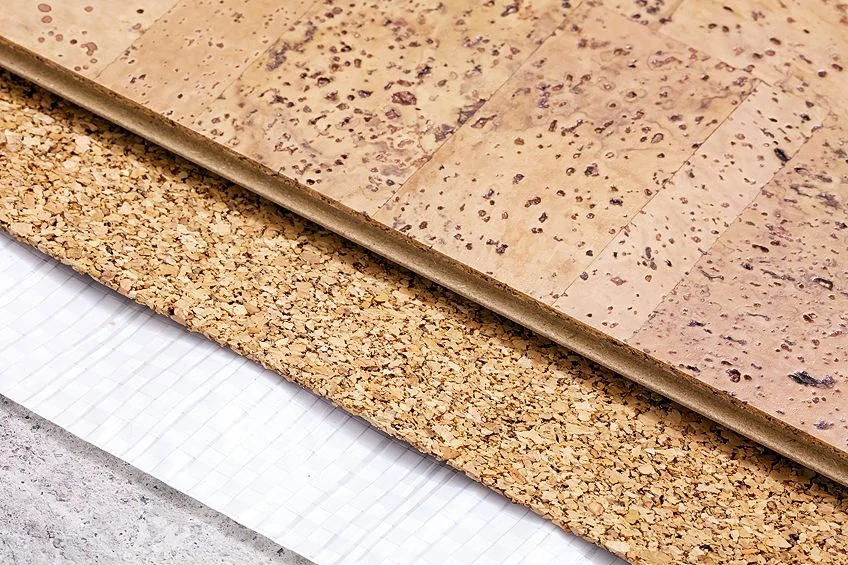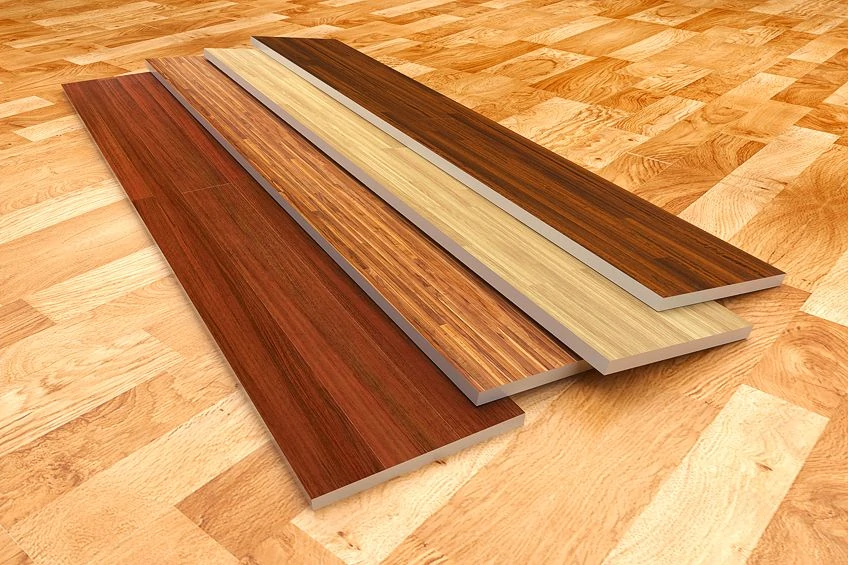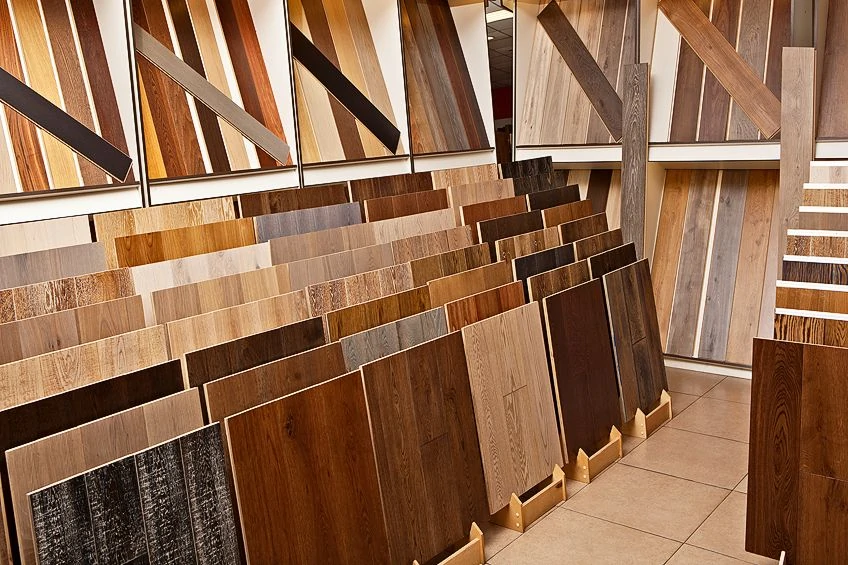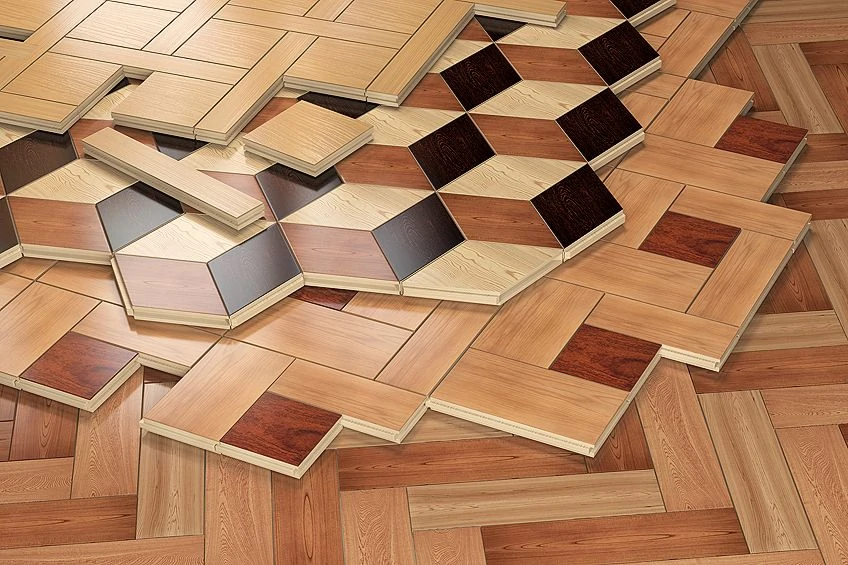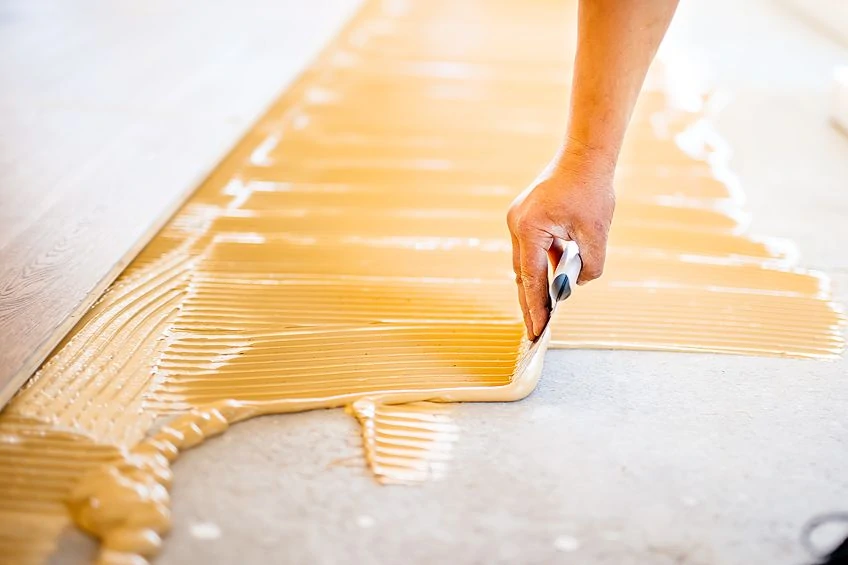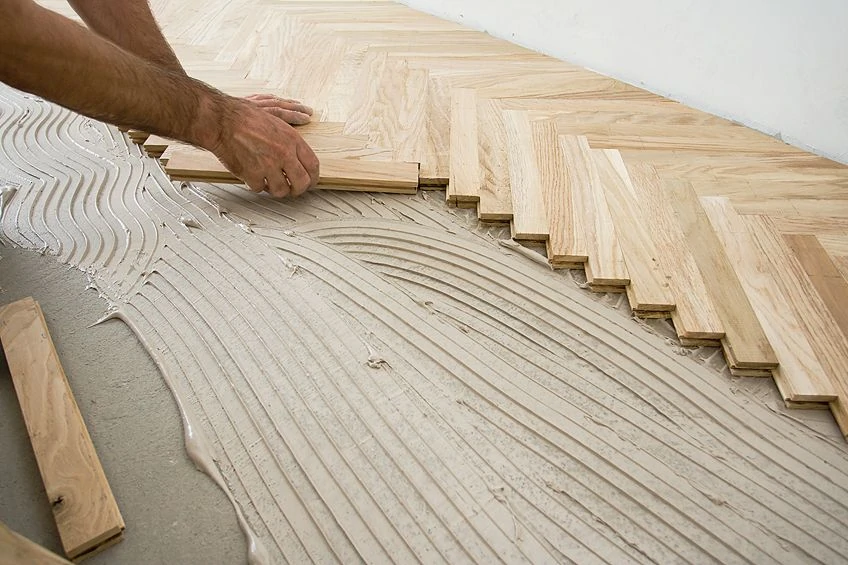Best Glue for Hardwood Floors – Different Wooden Floor Adhesives
This post may contain affiliate links. We may earn a small commission from purchases made through them, at no additional cost to you. You help to support resin-expert.com
Maybe you have decided to change the appearance of your old flooring and install a solid hardwood floor instead. The next decision is to choose what type and wood finish you want, and you have to decide whether you are going to do the job yourself. The last decision is how are you going to secure it to the existing flooring? In this article, we are going to help you understand how to install your hardwood flooring and how to buy the best glue for hardwood floors.
Table of Contents
Important Considerations Before You Start
There are a number of things to consider before you can begin laying down a new floor. These include the type of substrate onto which you will be laying your flooring, the type of flooring you choose to use, the species of wood and finish of those wooden boards, as well as the pattern of the wood grain.
Type of Substrate
Apart from the hardwood flooring options and installation methods, you will also need to consider the substrate. This is the material or structure that you will be laying your flooring upon. This is of vital importance as it will denote what installation method you must use, as well as the type of wood floor adhesive you need to apply. There are three types of installation methods and these include nailing, gluing, or a combination of both. Let us now consider what these different substrates are and how they will affect our installation process.
Concrete Slab or Ceramic Tile Substrate
With this type of substrate, the nail-down installation method is not an option, so your floor will need to be glued down. This is a far superior installation method as it recognizes the natural movement of your wood boards and allows them to expand and contract to prevent any failure or noisy boards. It also provides a very strong bond between the substrate and the wooden boards, ensuring the durability of your flooring.
Old or Existing Wooden Substrate
If your substrate is also wood, then you can choose to nail it down or use a combination of nailing and glue. The nail-down method is by far the cheapest and less labor-intensive method, but it runs a very high risk of creating joint gaps between the floorboards, which can result in a noisy and squeaky floor. However, the combination method of both nailing and gluing down the boards is far better than the nail-down method alone.
Irrespective of what installation method you are going to use for your new floor, you will need good-quality floorboard glue to ensure the job is done efficiently and effectively.
Types of Wood Flooring
The type of wood flooring you choose to install is also very important, as it will give your floor natural beauty and can be laid in any room in your home. The different types of wood flooring are extensive and include laminate, engineered, solid, bamboo, Parquet, and much more. However, in this article, we will only be dealing with three of these types, with a special focus on hardwood floors. When choosing your hardwood flooring, there are several aspects to consider, and we will be guiding you through the process step by step to ensure that you purchase only the best type for your application.
Hardwood Wood Flooring
Solid wood or hardwood flooring boards are made from one solid piece of wood, which is usually around 3/4 to 13/16 of an inch thick, and come in a tongue-and-groove system of installation. All of these types of wood flooring have a hardness score, for example, chestnut wood boards are the softest, and Brazilian walnut is the hardest.
This hardness score of the wood boards tells you whether they can be easily damaged or worn, and is an indicator as to where you can lay them. For example, what type of wood board should you use in a playroom or living room?
This type of wood flooring is ideal for use in hallways, playrooms, and living areas where there is plenty of daily traffic. The solid wood boards can also be sanded down to remove any damage or scuff marks, but do not sand the surface too much. These wood boards amplify sound, so if you install them upstairs it is a good idea to lay down a carpet. There are certain advantages and disadvantages to this type of flooring.
PROS
- Gives your room a pleasing and classic look
- Extremely attractive
- Can be sanded many times over, restoring it to its original finish
- A durable, long-lasting wood
CONS
- Costs more than other types of wood floors
- Inclined to swell in damp conditions and shrink in dry
- Difficult to install as their shape changes after it has been manufactured
Laminate Flooring
Laminate flooring is compressed fiberboard that is covered with an image of a certain type of wood, and may even feature elements like knots. This gives it a more natural look, and it is finished with a protective overlay. This type of floor is great in high-traffic spaces such as playrooms, living rooms, or studies. Certain products have a waterproof core that makes them perfect in kitchens or bathrooms as well.
PROS
- Fairly cheap
- Durable
- Effortless to install
- A wide range of natural materials available
CONS
- Do not look or feel like the real hardwood flooring
- Joints may wear over time
- Moisture can cause swelling
- Very hard to repair
Engineered Wood Flooring
Engineered wood floorboards comprise three or four layers of wood that are glued together to form a wooden board that is about a 1/2-inch thick, with the top layer being around 1/8 of an inch thick. This allows you to sand the surface if it becomes worn, damaged, or scuffed and restores it to its original finish. However, this can only be done once in the lifetime of the floor.
Some flooring options come in click-and-lock installation types, which do not require any floorboard glue to install. Others come in tongue-and-groove installation types that need to be glued to hold them in place. This type of flooring is ideal for laying in dining rooms, living areas, kitchens, and bedrooms. It has better resistance to warping than solid wood flooring, but you need to try to avoid places that have very high humidity, such as in bathrooms. These are very time-consuming to lay, so it is advisable to avoid stairs and corners like pedestals.
PROS
- It is a lot more stable than solid hardwood flooring
- A lot less prone to humidity damage than solid hardwood flooring
- Cheaper than solid hardwood flooring
- A lot more attractive than laminate flooring and looks like genuine wood
CONS
- The tongue-and-groove type is a lot harder and more time consuming to install than the click-and-lock type
- More expensive than the laminate flooring
Is the Finish of the Wood Boards Important?
Here is another decision you will need to make: Should you install prefinished or unfinished hardwood boards? As far as the quality and beauty of the flooring are concerned, there is no difference between the two, but both of them have their specific characteristics. So, what are the main differences between the two options, and which one should you choose?
Prefinished Wood Flooring Boards
These hardwood boards have been finished at the factory, which means that they have already been sanded, stained, and coated with a polyurethane finish, so all you need to do is install them. The boards have been oven-baked and have a very hard acrylic finish, and are also left with a beveled edge on each side of the board. This means that when they are installed, there will be a groove between each board, making the floor not completely flat, which allows moisture to enter through the groove.
These are easy and quick to install and you will be able to walk on the floor the moment it has been installed. You will not have any annoying fumes or dust to deal with.
Unfinished Wood Floor Boards
The unfinished flooring boards are raw wood and need on-site sanding and finishing. They have no beveled edges, so there are no grooves between the boards, and once sanded your floor will be perfectly flat and smooth with no means of allowing moisture to enter. This is an excellent choice if you intend to match the existing décor or color scheme of the room. They are great if you want to lay the flooring in the kitchen where there is a lot of moisture, as the boards are properly sealed.
Different Wood Species
The species of the wood is an important part of your hardwood flooring options, as it will bring out the wood finish you choose, thus enhancing the entire room. When you are faced with the decision of choosing different wood species for your hardwood flooring, there are many options available. Here are a few of the most popular options for you to consider.
- Oak is one of the most common choices for its wide grain, durability, and choice of stains like white oak and red oak, to name a few.
- Walnut is darker than oak but is a much warmer and richer option.
- Maple has a much finer grain pattern but is more susceptible to rot.
- Teak is suited more for the outdoors and is very durable, although a lot more expensive.
- Pine comes in hundreds of different types, so you need to be specific when choosing it.
- Hickory has amazing grain patterns and is very strong and beautiful. It is also difficult to cut and comes in colors from medium tan to red-brown.
Different Hardwood Patterns
You have made some decisions concerning the hardwood products you want to use, so now comes the fun part: You need to decide what pattern you want when you install your hardwood flooring. There are several different floor patterns available, but here are some of the more common types for you to choose from.
- Parquet Pattern: Square boards that alternate in different directions, also referred to as “bricks”, or can be used as intricate inlay borders.
- Herringbone Pattern: Created by laying down short lengths of boards in a V-shape in an interlocking manner.
- Straight Pattern: Formed when long lengths of the board are installed end-to-end.
- Random Pattern: This pattern is formed when boards of different widths are installed in a diagonal or straight pattern, giving the impression of a larger room.
- Basketweave Pattern: This is usually done with maple or oak wood boards, where they are installed diagonally or parallel to the walls in the room. With this type of pattern, you can experiment by using two different types of hardwood board.
Types of Hardwood Flooring Adhesives
Now, it is time to make the last, and probably the most important decision: What are the best hardwood flooring adhesives for hardwood floors? This task can be quite daunting as there are many kinds of hardwood glues available. Also, different types of glue are recommended for different types of flooring.
The right type of wood floor glue depends mainly on the type of hardwood you have chosen. This means that if you have selected a solid hardwood, you need to note that it is sensitive to the environment and will contract and expand more easily. Thus, you need to choose a glue that is more flexible to prevent the possibility of your wood cracking.
However, if you have chosen engineered hardwood, you can consider buying a less elastic glue. You also have the option of choosing multi-functional wooden floor adhesives that can be applied to several different types of hardwood.
In case you are a little confused at the moment, let us put your mind at ease, as there are only two types of wood floor glue that you need to choose from for bonding your hardwood flooring.
Urethane Wood Floor Glue
This type of wooden floor adhesive is the most popular glue used for securing your hardwood flooring. The benefit of using urethane glue is that it is designed to be very flexible when dry. This means that you need to use it if you are installing a solid hardwood floor, or where the floor is going to be carrying a lot of weight. In these situations, the floor needs to be able to move or be flexible when someone walks over it.
This type of wooden floor adhesive produces a very strong bond, giving you a hardwood floor that will last for many years. The glue also dries fairly quickly and provides a waterproof finish, which is very important for your floor surface. Urethane glue is also eco-friendly.
Water-Based Wood Floor Glue
Remember, this type of glue is water-based and is, therefore, not waterproof or resistant to moisture, even after it is properly cured. This means that the glue may lose its bond and come undone when wet. For this reason, water-based glue is not the best choice for gluing down your hardwood flooring.
However, this type of glue has one big advantage, which is that it will respond very well to the “banana effect” when installing engineered hardwood floors. This effect takes place when your wood boards are not properly bonded to the substrate. All you need to do to fix this is to put a heavyweight over that section and leave it to dry. You will then find that the bond will be stronger and more solid. When you have this effect taking place and you have used urethane glue, there are no corrective measures that you can take to solve the problem.
Just to sum up, urethane glue is used when you need flexibility and movement of the floorboards, and water-based glue is used because it is easy to clean up and the volatile organic compound (VOC) content is very low.
Best Glue for Hardwood Floors
It is now the time to look for the best glue for hardwood floors that will give you optimal results for bonding the floor to the substrate. This means that there are no shortcuts, and you will only pick up problems if you choose a cheap glue. Then again, you do not have to go out and buy the most expensive hardwood glue either. So, why not let us guide you through some of the best glue for hardwood floors.
Best Overall Glue Choice: BOSTIK GreenForce Adhesive
The Bostic GreenForce Adhesive is a urethane glue and is by far the best glue on the market to use for bonding hardwood floors, especially on concrete substrates. The main advantage of using this product is that it has great moisture control, which means that it keeps moisture from coming through the substrate and into contact with the hardwood, thus protecting your floor.
The glue also cures very quickly, but not so quickly that you do not have time to work with it. Once dry, it forms such a strong bond between the wood floor and the substrate that it is almost impossible the break. It is also very flexible once dry, preventing any cracking of your floorboards when weight is applied to them. Additionally, this glue does not emit any strong fumes, as it contains no VOCs, making it perfectly safe to use, even in areas with little ventilation.
- One of the best urethane glues on the market for bonding hardwood
- Formulated with moisture control, thus preventing water damage
- Completely safe to use with zero VOCs or strong fumes
PROS
- Very flexible
- No VOC content
- Built-in moisture control, making it moisture-resistant
- Dries very quickly
CONS
- Can be messy and very sticky
Best Solvent-Free Glue: ROBERTS Multipurpose Flooring Adhesive
The Roberts Multipurpose Flooring Adhesive is solvent-free and ideal for bonding a variety of flooring materials to both concrete and wood substrates. This includes hardwood flooring, engineered flooring, vinyl tiles, and much more. The wood floor adhesive has a moisture control feature, which prevents moisture from seeping through the substrate into the hardwood flooring, thus protecting the wood.
The product is very easy to use and provides an aggressive, strong bond once it is properly cured. This product also has a low odor due to its lack of solvents and it is water-resistant once cured. Once the tin has been opened, you need to use it within 20 minutes. You have around 30 minutes to work with the product once applied, and it will then require 24 to 48 hours to cure properly.
- A high-quality, high-solid, cross-linking formulation
- Pressure-sensitive with tremendous bond and shear strengths
- Excellent moisture and plasticiser migration resistance
PROS
- Built-in moisture control feature
- Permanent tack
- Can be used for a variety of different types of wood flooring as well as substrates
- Very strong bonding properties
CONS
- Can be a bit messy
- Takes a fairly long time to cure properly
Best Floating Floor Glue: CAL-FLOR Floating Floor Glue
The Cal-Flor Floating Floor Glue is primarily designed for floating engineered wood flooring, but can also be used for solid hardwood flooring installation. The glue is also specially designed for click and tongue, and glove flooring, but may be used for other types as well.
The Cal-Flor product also has the advantage of moisture control and provides you with a strong barrier, preventing moisture from leaking through the substrate and damaging the wood. This feature makes it ideal for use in bathroom and kitchen areas. It also gives you a very strong bond, and once dry, it is very flexible, which is ideal for pressure and weight resistance.
- More effective barrier to water damage than other glues
- Perfect for wet areas such as bathrooms and kitchens
- Flexible when dry, resulting in a stronger bond
PROS
- Excellent bond strength
- Provides a moisture barrier
- Ideal for all kinds of wood flooring
- Very flexible once dried
- Resistant to temperature
CONS
- Gives off a strong odor
- Can only be used on wood
How to Install Your Hardwood Flooring
We have already discussed that there are three methods for securing wood flooring to a substrate. These methods include gluing, nailing, or a combination of both. Below, we will be dealing with the glue-down method over a concrete substrate.
- The first thing you need to do is examine the substrate, as this is the main surface where the wood boards will be glued, using your hardwood flooring adhesives. If this is not done correctly, then your project will not be successful.
- You must get your substrate perfectly flat before you start any installation, which means that you need to sand down any high spots and fill in any low spots. A good guideline for leveling would be to avoid any more than 3/16 of an inch difference over a 10-foot diameter area.
- You also need moisture and humidity readings of the concrete, as this will affect how the wood expands and contracts. If the readings are fairly high, you will need to ensure that you buy hardwood floor glues that have a vapor barrier to protect the wood. You also need to make sure that the substrate is completely clean and dry.
- Spread the glue evenly over the substrate, but be careful not to cover the whole floor in one go. Only do a small section at a time, using the correct trowel.
- Next, it is time to install your hardwood floors. When laying the flooring, ensure that you leave an expansion gap about 3/4 of an inch from the wall – this should be large enough to allow the wood to expand and contract. This will also be where the first row will start. It may be a good idea to plan the installation pattern by laying the boards down as you want them to be before you apply the glue.
- Apply the wood floor adhesive to the floor using the trowel, ensuring that you are working in a well-ventilated area. Install the longest and straightest of the boards in your first row and press them down, ensuring that they stick properly to the floor. When installing the second row, make sure that the first board is about six inches shorter or longer than the board in the first row, which will give the flooring a staggered effect.
- Continue in this way for the rest of the floor space and use some blue printer tape to keep the boards held tightly together. Once you have completed the laying down of the hardwood flooring, it needs to be left for about 24 hours for the glue to cure properly before you walk on or move furniture over it. Once done, you will have a wooden floor that will last for a long time.
To make things a little easier for you to understand, below is a short table showing what type of installation you should use for different types of substrates.
| Hardwood Flooring Type | Existing Substrate Type | ||
| Concrete | Solid Wood or Plywood | Chipboard | |
| Solid Wood Flooring | Glue | Nail or Screw | Glue |
| Engineered Wood Flooring | Glue or Float | Nail, Screw, or Float | Glue or Float |
Frequently Asked Questions
Can You Glue Hardwood Flooring?
If the substrate is concrete, then you should glue down the wood flooring. However, if the substrate is wood, you have the option of gluing down or nailing down the wood flooring.
How Long Does It Take for Wooden Floor Adhesives to Dry?
Most glues will dry within 12 to 20 hours, all depending on the humidity levels of where they have been installed. However, for safety’s sake, allow the glue 24 hours to dry before you walk on it or start moving furniture over it.
Is It Necessary to Use a Vapor Barrier Between Concrete and Wooden Floors?
We suggest that you install a vapor barrier for your hardwood floor, as it will protect your flooring and prevent mildew and moisture from seeping into your wood. This can be in the form of a special type of glue.
Does Hardwood Flooring Require Anything Underneath?
It is not essential to put anything down, however, many users put materials down between the floorboards and the substrate. This could be cork, felt, rubber, or foam. This layer gives your floor added strength and also reduces the squeaking effect that a floor can have when walking over it.


